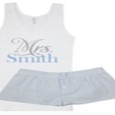Although you may not know it, calendared rubber is a part of everyday life. Calendared rubber is created by running rubber through a space between two rollers, the pressure that is subjected on the rubber forces it into sheet form. Calendared rubber can be pure rubber or it can contain fabric or wire mesh to form a strong composite material which is often used for conveyor belts that carry abrasive material.
It is actually quite difficult to go even one day without being in contact with calendared rubber, all you have to do is remove your shoes and look at the soles. The outermost sole, the part with a tread is most likely to be made from calendared rubber. In the shoe making industry the outer-soles are made from whole sheets of material. The rubber is run through at least two processes, the first trip through the rollers smoothes and flattens the rubber; it is then sent through another set of rollers however this time the rollers are textured. The textured rollers imprint the tread design and the shoemakers mark or logo. Once the entire sheet is completed the outer soles are cut from the sheet the same way that you would cut cookies from a sheet of cookie dough.
Have you ever wondered how tire manufacturers get a steel belt in their tires? The same way! The steel belt material is layered between two pieces of rubber. The steel belt is what gives the tires on your car their strength, shape and resistance to puncture. Once again, it is the extreme pressure that the rubber and steel mesh composite is put under that causes the bonding to take place.
Composite calendared rubber does not necessarily have to be with steel, in many cases the rubber is boned to a fabric material. The manufacturing process is identical; two pieces of rubber, one on either side of the fabric, the high pressure bonding the “sandwich” together.
Calendared rubber is also the basis for the boots that are worn by firefighters. The boots that these public servants wear must be extremely strong as they are constantly exposed to heat, broken glass and rubble.
Although one normally thinks of rubber when the calendaring process is discussed it is also applicable to paper. Paper is subjected to the process to give it a smooth finish, giving the paper either a matte or gloss finish.


